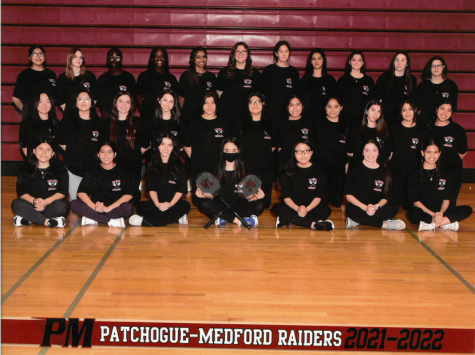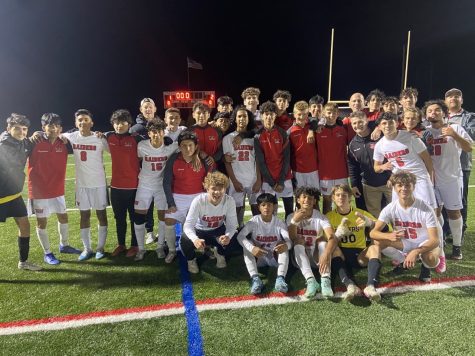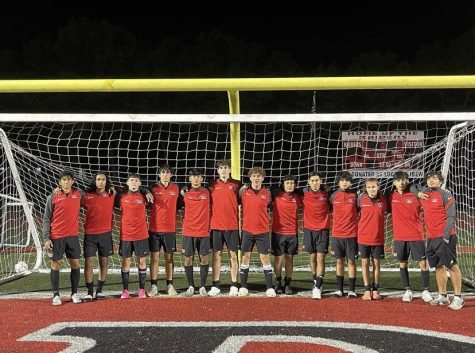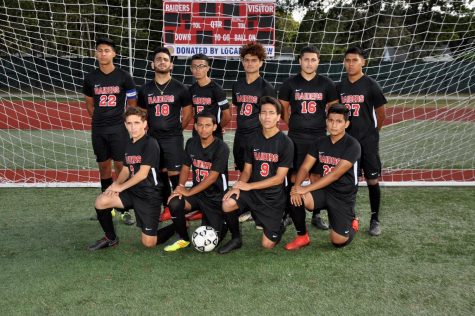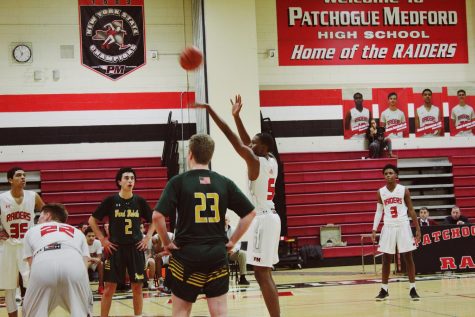An Interview with the Yoga Teacher for the Patchogue Medford School District
Photo by Photo by Sue Murphy
Students at Barton Elementary practicing yoga.
Recently, the Patchogue Medford School district has been catching the attention of people and news outlets nationwide for its many progressive changes. The school district has lengthened the recess time for elementary school students and most notably, started providing yoga education to benefit the students and teachers alike. Sue Murphy, the woman who runs this program has offered an inside look on what her job is like and the many impacts of it.
- How did you initially propose the idea of teaching yoga in the schools?
- I met with Dr. Hynes in October 2015 about volunteering to teach a few classes in one of the elementary schools. We were both so excited about the possibilities of introducing yoga into the schools that by the time I left our second meeting, we had our vision and our initial plans started.
- What are the benefits for practicing yoga, especially for students?
- I think the benefits are tremendous. Kids are under so much pressure and stress these days. Between school, social media, sports, etc. you guys are living in a world of “pushing further” and going, going and going. Everyone, regardless of their age, spends so much time worrying about the future and thinking about the past that they barely notice they are missing the present. Yoga brings you back to the only time you really have – now.
- Do the ages of the students impact what they get from the classes? How does the structure of the classes change by the age of the student?
- Definitely, the first thing to consider is how long the kids can participate. The younger the student, the shorter the class. Each student gets time to experience a guided meditation and do some physical practice. The students age dictates the way in which we do that. For example, in the adaptive PE class at Barton, we sing songs while doing postures to keep them engaged. I would never do that in a HS class!
- Have you faced any problems teaching such a new subject that many are uneducated about?
- I wouldn’t say “problems” – more like challenges. It’s an interesting change going into a room to teach yoga to people (adults and kids alike) who might not necessarily want to be there. Normally, people are paying to practice with us! Usually, even if they are reluctant at first, once that person starts to notice a shift in their body they begin to see the benefits of what we are doing.
- Do you teach all of the yoga classes in the schools?
- No, I have two other women who work with me.
- Has your program grown in popularity?
- Yes!!! A few weeks ago it was all over the news! I was so excited about it because it’s my “baby” and I’m super proud of it. It went from just me going into the schools to me creating a team of yoga teachers working together to make this great program work.
- Has your program inspired other programs?
- I don’t know. I hope so. On social media, I can see that it is being well received and it is seen as very progressive. I have had another teacher ask me about how she can start something in a neighboring district. However, we can spread mindfulness and self-regulation is good with me!
- What preparation do you need to teach yoga to students?
- I’m a firm believer that, in yoga, the more you know – the less you know! Yoga is such a huge science. Most people do not realize that it is such a “big umbrella” term. There are tons of different styles layered upon history, beliefs, anatomy, etc. To be a yoga teacher, you need 200 hours of training and, in my opinion, that is just the beginning. That will give you an basic knowledge/skill set to construct a class. I’ve been teaching for 9 years, had many different trainings and am currently on the tail end of a 300 hour training (becoming a 500 hour teacher). To keep inspiring my students AND myself, and to keep growing as a spiritual being, we always need to keep learning. You can do trainings in how to teach specifically to kids, too. I’m not sure how many hours they might be – maybe around 20 to 30 – on top of the 200 hour training. I didn’t do that because I used to be a public school teacher so I already have a Master’s Degree in Education. So I had that covered!
- How has yoga benefitted you personally?
- Wow! That is a huge question! There are not enough words to describe what my practice means to me. It helps me, constantly, to become a better person. Using the breath and movement, yoga helps me find a home in my body. It helps me slow down my “monkey mind” and stay present. It makes me a better person, better teacher and, most importantly, a better parent.
- What have your students said to you about your teaching/classes?
- One thing I will never forget, and almost brought me to tears, is something someone said to me at the gym where I work. In one of my morning classes, I have people with a wide variety of ages. I have a retired doctor in my class that I would say is in his 80s. He likes to practice in the corner. He does what he can. I know a bit about his life and he hasn’t had it easy lately. He doesn’t like me to spend too much time on him – we kind of came to an understanding that he will do what he can but not to expect too much (his words!) We call it “our agreement”. He sits quietly all the time and waves me away when he does not want to be disturbed. He has become a quiet presence in my classes. One day, he came over to me after class and said that “I keep him alive”. That was, and probably will be, the greatest teaching compliment I will ever get.


